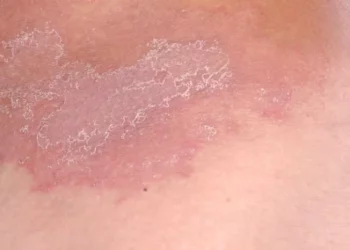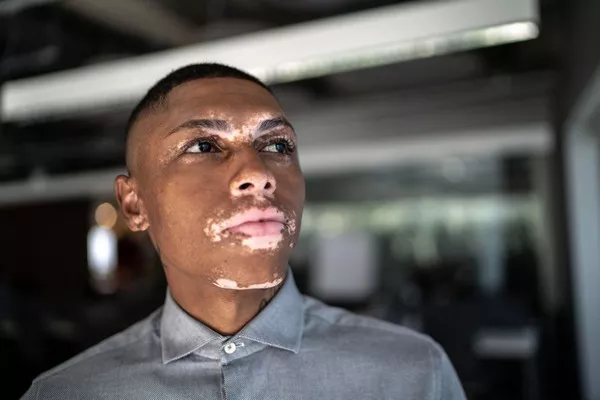Ringworm, despite its name, is not caused by worms but rather by a fungal infection that can affect the skin, scalp, or nails. It manifests as a red, circular rash with a clear center, often resembling a ring or several rings. While ringworm is typically not a serious condition, it can be uncomfortable and unsightly. One common question that arises when dealing with ringworm is whether it hurts during the healing process. In this article, we will delve into the details of ringworm, its symptoms, treatment, and whether or not it causes pain as it heals.
Understanding Ringworm
Ringworm, medically known as dermatophytosis, is caused by various fungi, including Trichophyton and Microsporum species. These fungi thrive on keratin, which is found in the outer layer of skin, hair, and nails. Ringworm infections are contagious and can spread through direct contact with an infected person or animal, or by touching contaminated objects such as towels, clothing, or sports equipment.
Symptoms of Ringworm
The symptoms of ringworm can vary depending on the affected area:
1. Skin: A red, circular rash that may be scaly, itchy, and raised around the edges. The center of the rash often appears clearer or more normal in color.
2. Scalp: Causes hair loss in patches, along with scaling and itching.
3. Nails: Thickened, discolored, and brittle nails that may separate from the nail bed.
Diagnosis and Treatment
Diagnosing ringworm usually involves a visual examination by a healthcare provider or dermatologist. In some cases, a skin scraping or biopsy may be performed to confirm the diagnosis. Treatment typically involves antifungal medications, which can be applied topically as creams or ointments for mild cases, or taken orally for more severe or widespread infections.
Does Ringworm Hurt During the Healing Process?
Pain During Active Infection
During the active phase of a ringworm infection, it is common to experience symptoms such as itching, burning, and discomfort. The skin may be inflamed and irritated, leading to a sensation of pain or tenderness, especially if the rash is in an area where clothing or friction aggravates it.
Pain During Healing
As the antifungal treatment begins to work and the infection starts to resolve, the symptoms of ringworm generally improve. The itching and redness gradually subside, and the rash begins to fade. However, some people may still experience mild discomfort during the healing process, which can include:
1. Dryness: The affected skin may become dry and flaky as it heals, which can sometimes cause mild itching or irritation.
2. Sensitivity: The area affected by ringworm may remain slightly sensitive to touch, especially if the infection was severe or if scratching occurred.
3. Residual Itching: Even after the infection has cleared, residual itching may persist for a short period as the skin regains its normal balance.
Managing Discomfort During Healing
To manage any discomfort during the healing process of ringworm, consider the following tips:
1. Continue Treatment: Follow your healthcare provider’s instructions regarding the use of antifungal medications. Consistent application or administration of the medication helps ensure that the infection clears up completely.
2. Keep the Area Clean and Dry: Moisture can prolong the healing process and may exacerbate itching. Keep the affected area clean and dry, and avoid wearing tight clothing that can rub against the skin.
3. Avoid Scratching: Although it may be tempting, scratching the affected area can delay healing and increase the risk of spreading the infection to other parts of your body or to other people.
SEE ALSO: Can Ringworm Come Back After Treatment?
4. Use Moisturizers: If dryness and flakiness are causing discomfort, use a gentle moisturizer to hydrate the skin. Choose products that are non-comedogenic and fragrance-free to avoid irritation.
5. Consult Your Healthcare Provider: If you experience severe pain, increasing redness, pus, or any other concerning symptoms during the healing process, consult your healthcare provider promptly. These could be signs of a secondary infection or an allergic reaction to the medication.
When to Expect Relief
In general, most people experience relief from the symptoms of ringworm within a few days to a couple of weeks of starting treatment. The itching and discomfort should gradually diminish as the antifungal medication takes effect and the skin heals. Complete resolution of the rash may take several weeks, depending on the severity of the infection and how promptly treatment was started.
Conclusion
Ringworm, while uncomfortable and sometimes unsightly, typically does not cause significant pain during the healing process. The discomfort associated with ringworm is usually more pronounced during the active phase of the infection, when symptoms such as itching and redness are at their peak. As treatment progresses and the infection resolves, any discomfort typically diminishes. By following prescribed treatment guidelines, keeping the affected area clean and dry, and avoiding scratching, you can help promote healing and alleviate any mild discomfort associated with ringworm. If you have any concerns or experience severe symptoms during the healing process, don’t hesitate to seek advice from a healthcare professional for appropriate management and guidance.
Related Topics:
























